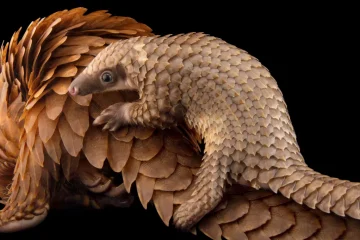
In the vast landscapes of Africa, one cannot help but be captivated by the enigmatic elegance of zebras. These magnificent creatures, adorned with their iconic black-and-white stripes, stand as a testament to the beauty of the natural world. Beyond their striking appearance lies a fascinating world of social intelligence, family bonds, and surprising resilience.
Zebras are primarily found in various regions of Africa, from savannas, grasslands, and woodlands to shrublands. Zebras share the same genus, Equus, with donkeys and horses. There are three main species: the plains zebra (Equus quagga), the mountain zebra (Equus zebra), and the Grévy’s zebra (Equus grevyi). Each species has adapted to its specific habitat, showcasing the remarkable ability of these animals to thrive in diverse environments.

And of course, their stripe patterns are also different from each other. Each zebra’s stripes are as unique as human fingerprints, making them instantly recognizable to others in their herd. The stripes serve both functional and aesthetic purposes, aiding in camouflage against predators in the grassy plains of Africa and providing a natural cooling system by dispersing heat. Apart from their stripes, zebras have barrel-chested bodies with tufted tails, elongated faces, and a bit-long neck. Their thin and long legs help them outrun the predators. Having large incisors that clip grass blades, as well as rough molars and premolars that are ideal for grinding, supports their lives as grazers.
Zebras are social animals, and they can be seen as a group. Their group usually consists of one mature male zebra, a few female zebras, and their young population. The only male zebra is known as the harem stallion. The harem stallion is responsible for the protection of its group.
Zebras are often hunted by lions in savannas, and cheetahs, leopards, spotted hyenas, and brown hyenas are also their predators. To protect themselves from predators, zebras have various defense styles. Being able to run fast and kick their rear legs, running in a zig-zag pattern, and living in herds helps to protect zebras from becoming the prey of predators.
Would you believe that zebras communicate using their facial expressions? Yes, you read it right. Besides facial expressions, zebras communicate through ear positioning and essential loud braying and barking sounds. Showing their teeth too is a signaling method for them.

In their average life span of 25 years, zebras face many threats apart from natural predators. Poaching, loss of habitats, and fragmentation due to human-linked activities are also major life threats for these magnificent creatures. By IUCN, the plains zebra is listed as Near Threatened. Meanwhile, the mountain zebra is listed as vulnerable, and the Grévy’s zebra is listed as endangered. Beyond their aesthetic appeal, zebras contribute to the delicate balance of African ecosystems. As we marvel at these striped marvels, it is crucial to recognize the importance of conservation efforts to protect their habitats and ensure a future where zebras can roam freely across the vast landscapes of Africa. In celebrating the beauty and uniqueness of zebras, we also acknowledge the responsibility we share in preserving the rich biodiversity of our planet.
Written by:
Aseni Perera
2nd Year Undergraduate,
Biological Science Stream,
Faculty of Science,
University of Colombo.
References:
- Dinerstein, E. (2024, January 16). Zebra | Size, Diet, & Facts. Encyclopedia Britannica. https://www.britannica.com/animal/zebra
Image Courtesy:



0 Comments